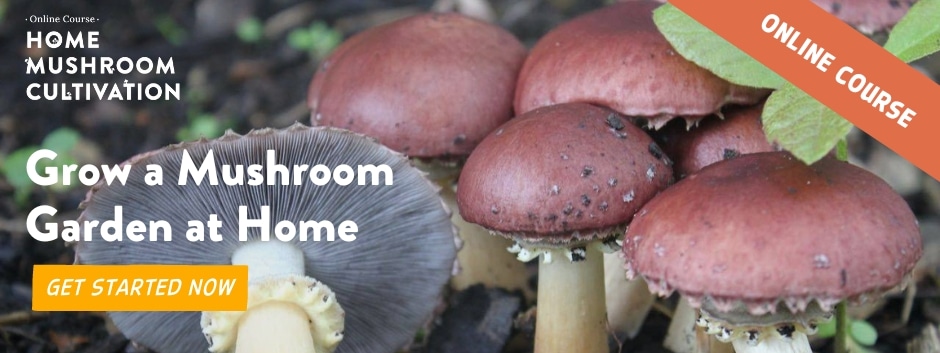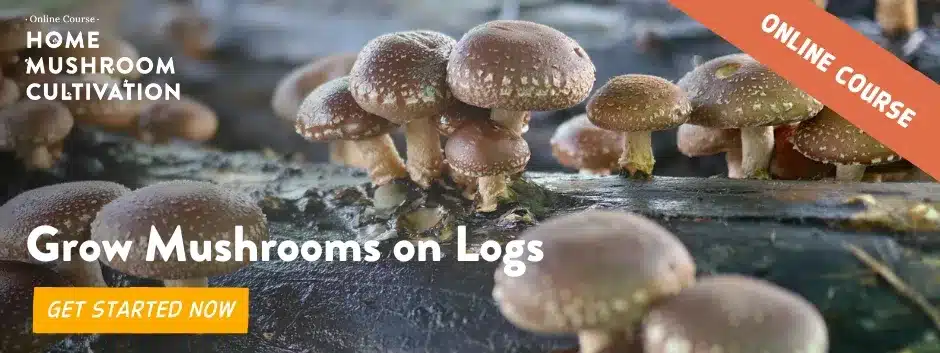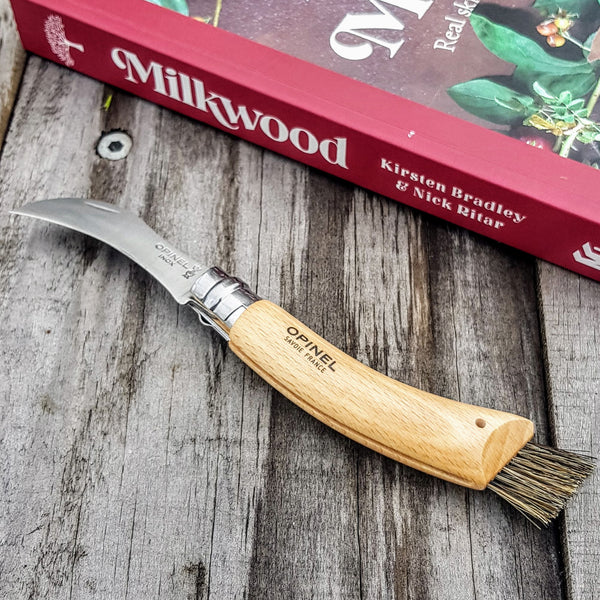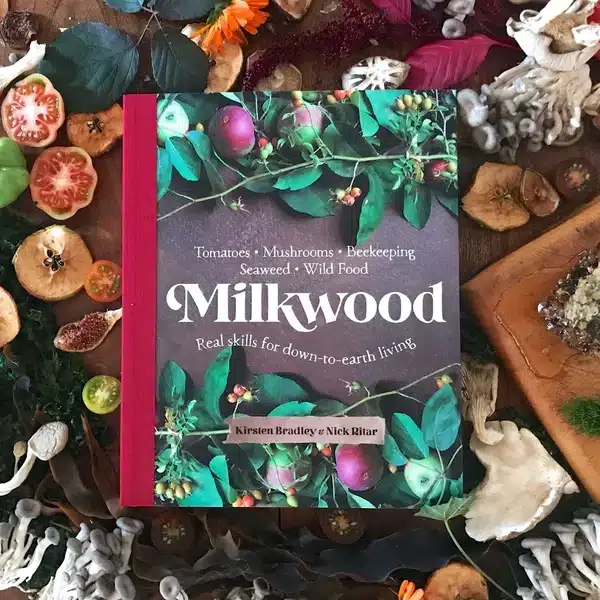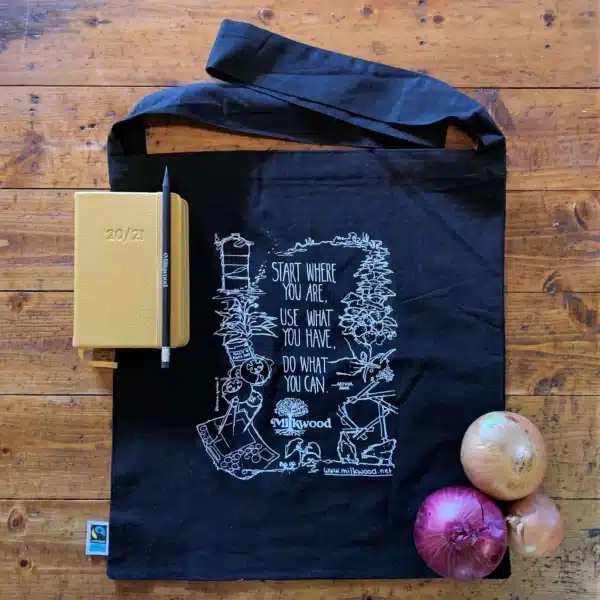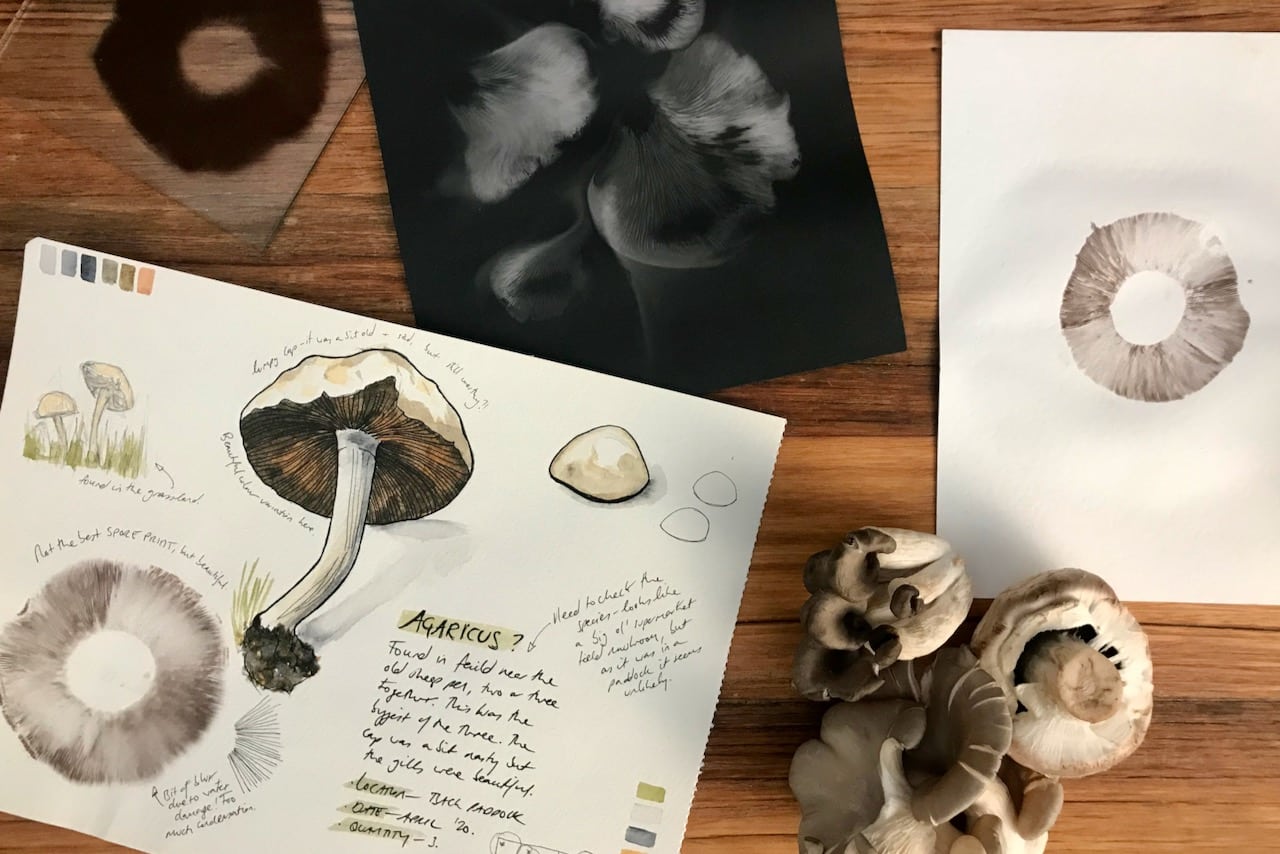
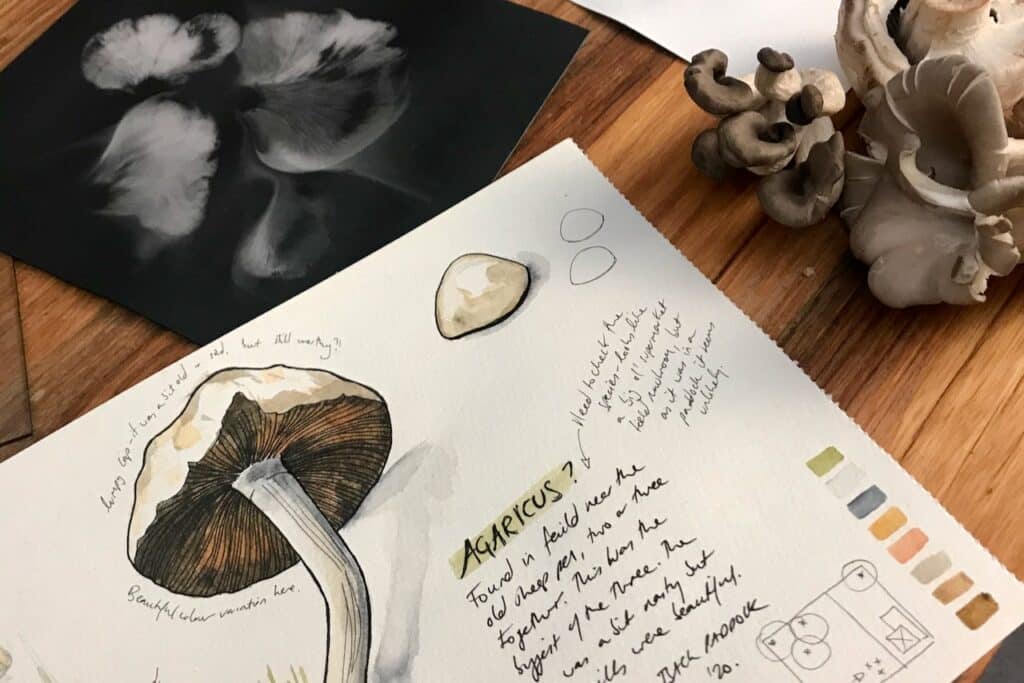
Making a mushroom spore print is an excellent way to get to know mushrooms a little better.
And as a bonus, Mushroom Spore Prints make beautiful artworks, and are also a great way to learn to ID different mushroom species.
So whether you’re after a forest-meets-craft project, or determined to ID your local mushrooms to get to know them better, Spore Prints are fun, easy and a great way to do both, at once.
Have you ever held a mushroom in your hand and wondered at the many mysteries it holds? Beyond their taste, their texture, and their place in our gardens, ecosystems and dinner plates, mushrooms carry within them billions of tiny worlds – spores – ready to burst forth and begin again.
There’s a simple and beautiful practice you can do right now, to start getting to know mushrooms a little better… make a spore print!
Here’s a snip of a lesson from our Home Mushroom Cultivation course – which covers all kinds of mushroom growing from buckets to logs to gardens.
In this lesson, Nick is talking about spawn vs spores. And as part of that, he shares how to make a spore print:
If you’d like to learn more about growing mushrooms at home, we mentor a class of students through the whole process, each season.
Here’s the course details: Home Mushroom Cultivation course.
We cover all the home cultivation options, for both delicious and medicinal mushrooms, with low-waste techniques, and show you how to grow a year-round supply of mushrooms. Yay.
We also have a free Beginner’s Guide to Mushroom Cultivation, and also a Free Mushrooms Mini-Course, if you’re keen to learn more.
Ok. Let’s do some spore printing…
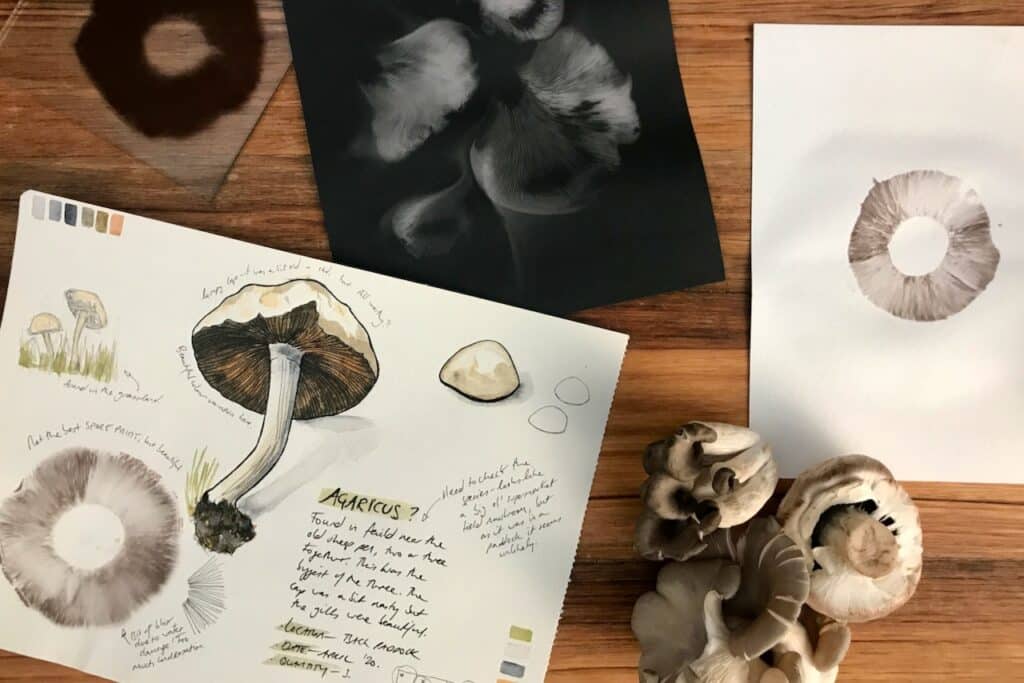
How to Make a Spore Print
Step 1: Meet Your Mushroom
Before we begin, let’s pause to admire the form of this being in your hand. Not all mushrooms are constructed quite the same, but most of our everyday friends – shiitakes, oysters, your humble Swiss brown – share some familiar features.
At the top, you’ll find the cap – wide and often rounded. Turn it over, and underneath you’ll see either gills or pores – delicate structures hiding billions of spores within. These spores are a little like the mushroom’s seeds (in a sense) though fungi do things in their own way…
Supporting the cap is the stipe (that’s the stem). Some mushrooms have a ring, left behind by a thin veil that once covered the gills – like a tiny mushroom skirt from its early days.
When selecting your mushroom, you can choose a fresh, store-bought one, or a mushroom that you pick from your local ecosystem.
We’ve added a note at the bottom of this article about mushroom safety and touching different species. Please read!
If you’re the type of mycelium-lover who delights in names and shapes (we are!), there’s a downloadable Anatomy of a Mushroom Guide below these How-To steps, from inside our course, with all the bits labeled – including different cap shapes and gill styles.
Step 2: Realise the Invisible
Here’s something magical: that mushroom you’re holding? It’s likely releasing thousands of microscopic spores into the air around you right now. We just can’t see them.
Or… can we?
Step 3: Make Your Spore Print
Now to the hands-on part. To catch a glimpse of the hidden spore magic, we’ll make a print. Here’s how:
- Choose your mushroom. Pick one with visible gills (oyster, portobello, Swiss brown… all good picks).
- Cut off the stipe – right up to the gills – so the cap can sit flat.
- Place it gill-side down on a piece of paper. Black paper works well for mushrooms with pale gills. White paper for darker-gilled mushrooms. Kitchen foil works for any – or for a dreamy effect, try a little square of glass.
- Cover it gently with a glass or bowl to keep out breezes and help the humidity.
- Leave it overnight. While you sleep, spores will drift down and settle, tracing out the pattern of the gills in fine, delicate dust.
- In the morning, lift the cap carefully.
There it is – your spore print. Intricate, symmetrical, impossibly fine. A tiny fungal mandala.
Step 4: What is The Spore Print Telling You?
Spore prints aren’t just beautiful – they’re clues. The colour of the spores can help you identify your mushroom. Some prints are white, some pink, others chocolate brown or even black. The gill colour doesn’t always match the spore colour, which is part of the surprise.
While it’s unlikely this print could grow a new mushroom (it’s not the cleanest environment for spore germination), it is a wonderful way to learn, observe, and deepen your connection with fungi.
If you’re doing this spore print to ID a new mushroom you’ve found, most Fungi Guides will include a note on each species spore print’s colour (see resources below for guide suggestions)
This can be really helpful if you’re trying to narrow down a possible species, and get to know your ecosystem by learning to positively ID different mushrooms in your garden (and beyond!)
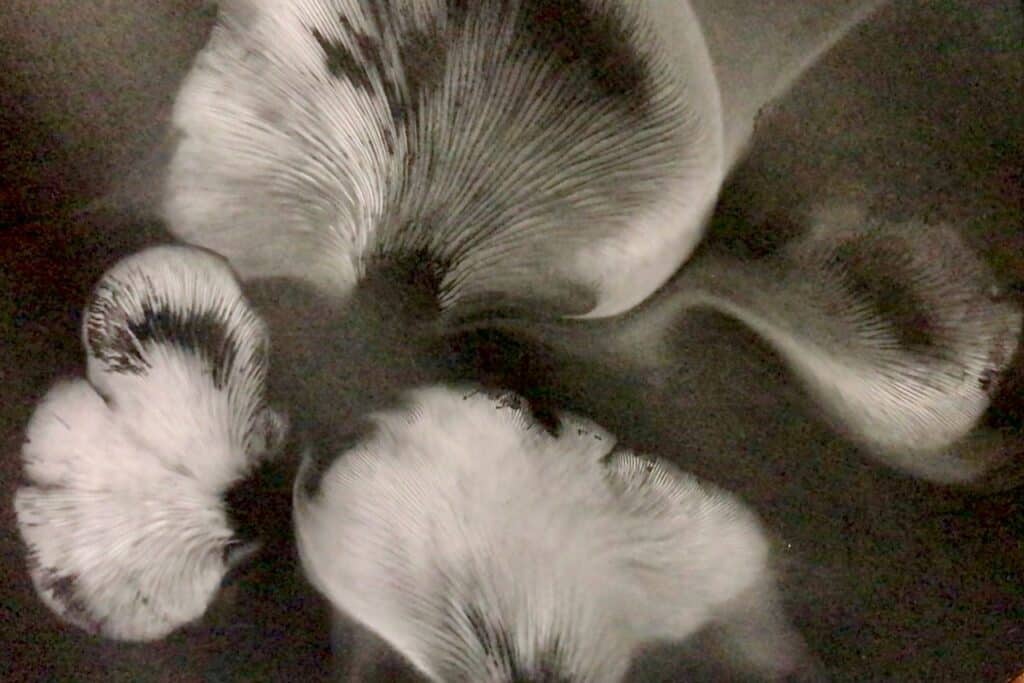
Step 5: Save It (if You Like)
Want to keep your print? Let it dry completely, then fix it gently with a spray of artist’s fixative or a light mist of hairspray. Frame it, gift it, or tuck it between the pages of your nature journal.
Don’t want to keep it? Spore prints are fine to add to your compost bin, or give it a quick wash under the tap, if it’s on foil or glass.
So go for it, try different species, learn lots, and don’t worry – the spore print won’t grow into mushrooms on your tabletop, we promise.
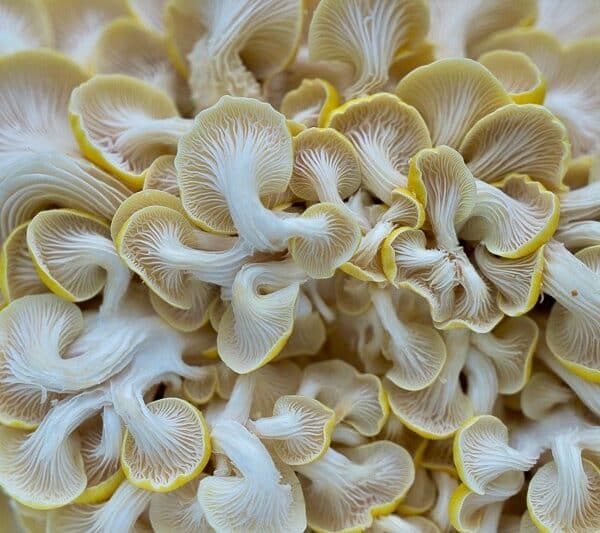
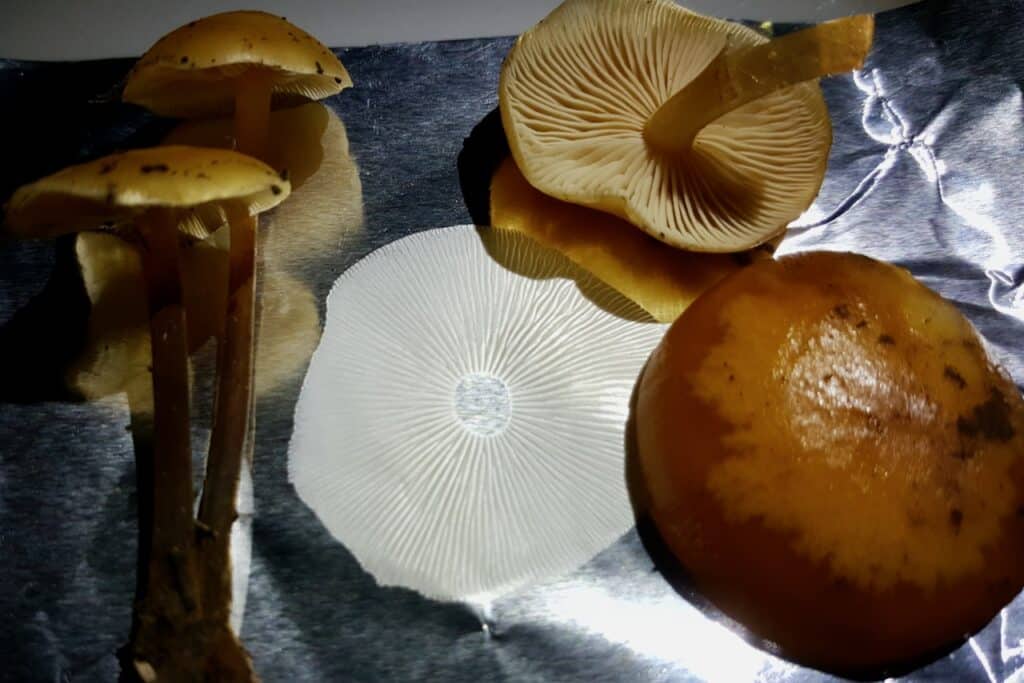
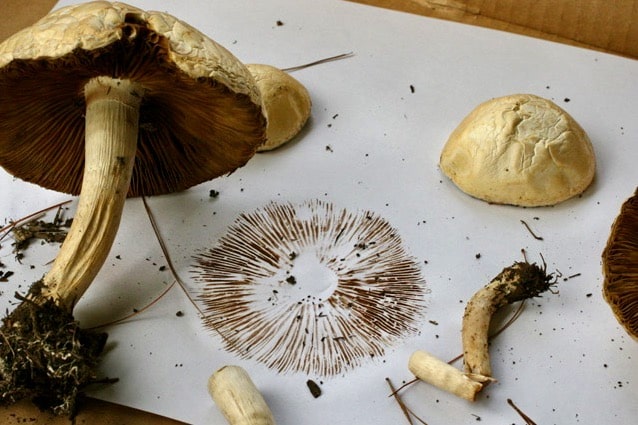
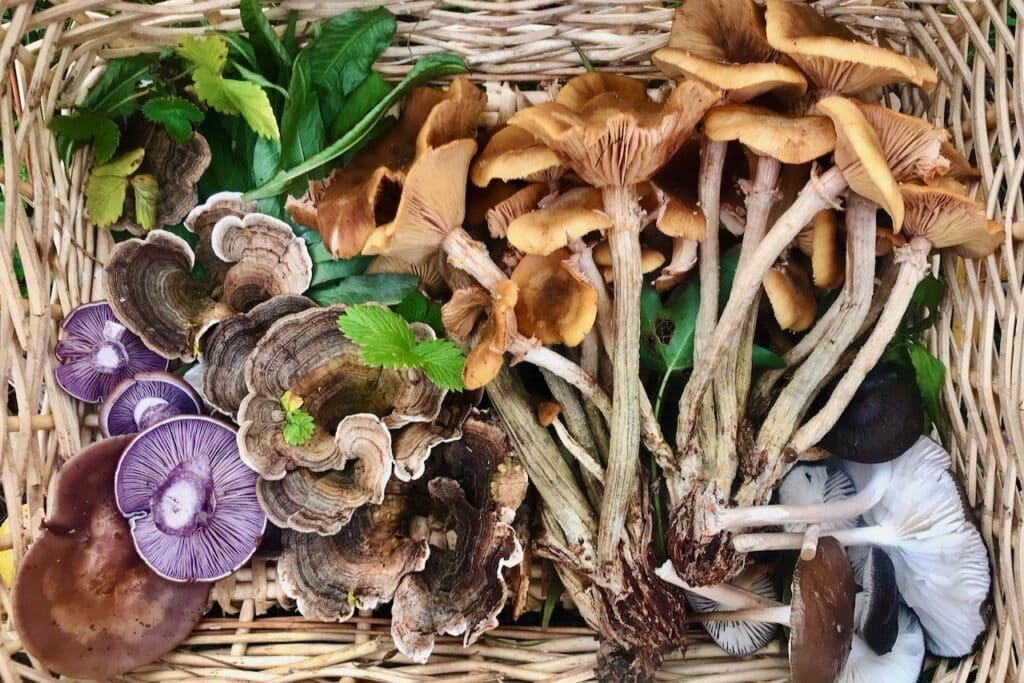
Spore prints are one of those small, slow activities that bring you closer to the hidden workings of the world.
They’re quiet little revelations, and all it takes is a mushroom, a bit of time, and your own curiosity.
So next time you’re walking through the market or a mossy patch of forest, see if you can spot a cap just waiting to share its story…
And then… let the spores fall where they may!
Further reading + learning on Mushroom Spore Prints:
- Our Beginner’s Guide to Mushroom Cultivation has lots of into on different mushroom types
- And our Mushrooms Mini-Course has more great learning inside
- Check out our Life Cycle of Fungi guide (it’s quite mindblowing)
- Here’s our Fungi Foraging Guide
- Chapter 2 of Milkwood (our first book) covers Home Mushroom Cultivation
- All our Mushroom Cultivation guides and articles are here.
- And all our Mushroom Foraging guides are here.
- Here’s our fave Mushroom Foraging Knife.
- Fungi Flip – if you live in Lutruwita Tasmania, get one of these!
- Wild Mushrooming, by Alison Pouliot & Tom May – great for AU folks, also plenty of crossover for others, as many of our edibles are introduced species.
- All the Rain Promises and More – classic US foraging book, which is still a stand-out, by David Aurora
- Love, love, loving artist Madge Evans’ work with cyanotypes and mushroom spores.
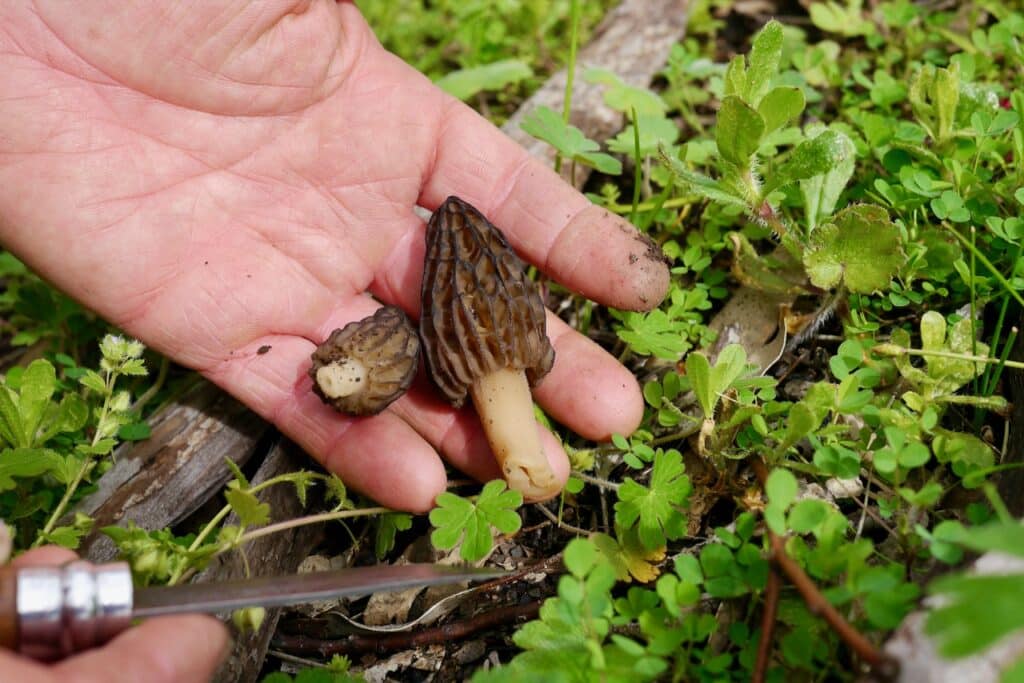
Note of Caution: Can I Touch Any Mushrooms I find?
There has been a lot of news lately about poisonous mushrooms in Australia and this, somewhat understandably, has led to a whole new wave of mycophobia.
However – good news, spore printers! – the medical and scientific consensus is clear…
Mushroom poisoning can occur through ingestion (eating the Mushroom), but not from simply touching mushrooms.
All authoritative sources define mushroom poisoning as resulting from consumption, and those sources that do directly address touching, confirm it is safe.
You can safely handle even the most poisonous mushrooms with your bare hands, but if you are concerned, wear gloves!
Some people may be concerned about the exposure to mushroom spores. For most individuals, occasional exposure to mushroom spores when handling a few foraged mushrooms for spore prints presents minimal risk.
Research indicates that small amounts of spore exposure are generally harmless, while adverse reactions typically result from repeated or high-concentration exposure in poorly ventilated environments AKA factory mushroom farms.
All that said, individual sensitivity varies significantly; some people may experience mild allergic reactions such as nasal congestion or sneezing, even with limited contact to some mushroom spores.
Folks with pre-existing respiratory conditions, asthma, or known fungal allergies should exercise greater caution.
So if this includes you – minimize any potential risk when making spore prints; work in a well-ventilated area (or do it all outside), consider wearing a mask if you have respiratory sensitivities, and wash your hands thoroughly afterward.
For safety, the most important precaution remains: never eat wild mushrooms unless identified with certainty.

And very, very lastly – a note that we have all co-evolved with mushrooms and mycelium for millenia, and we’re all basically family, genetically speaking.
So we encourage you to get to know mushrooms and fungi in your local ecosystem, in whatever way that looks like for you!
Learning the ways of our fungi cousins will make your life so much richer, and bring you more into relationship with all the things that matter, on this planet, at this time on Earth x


